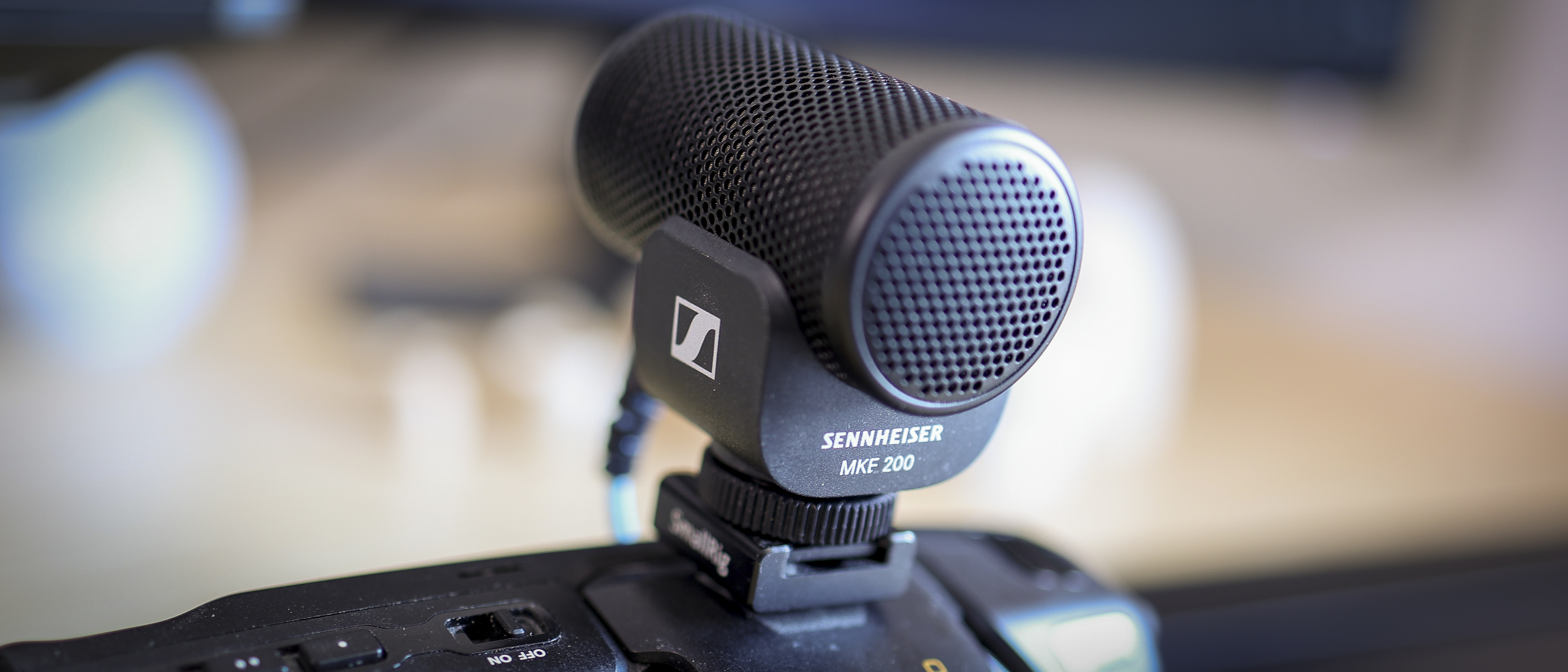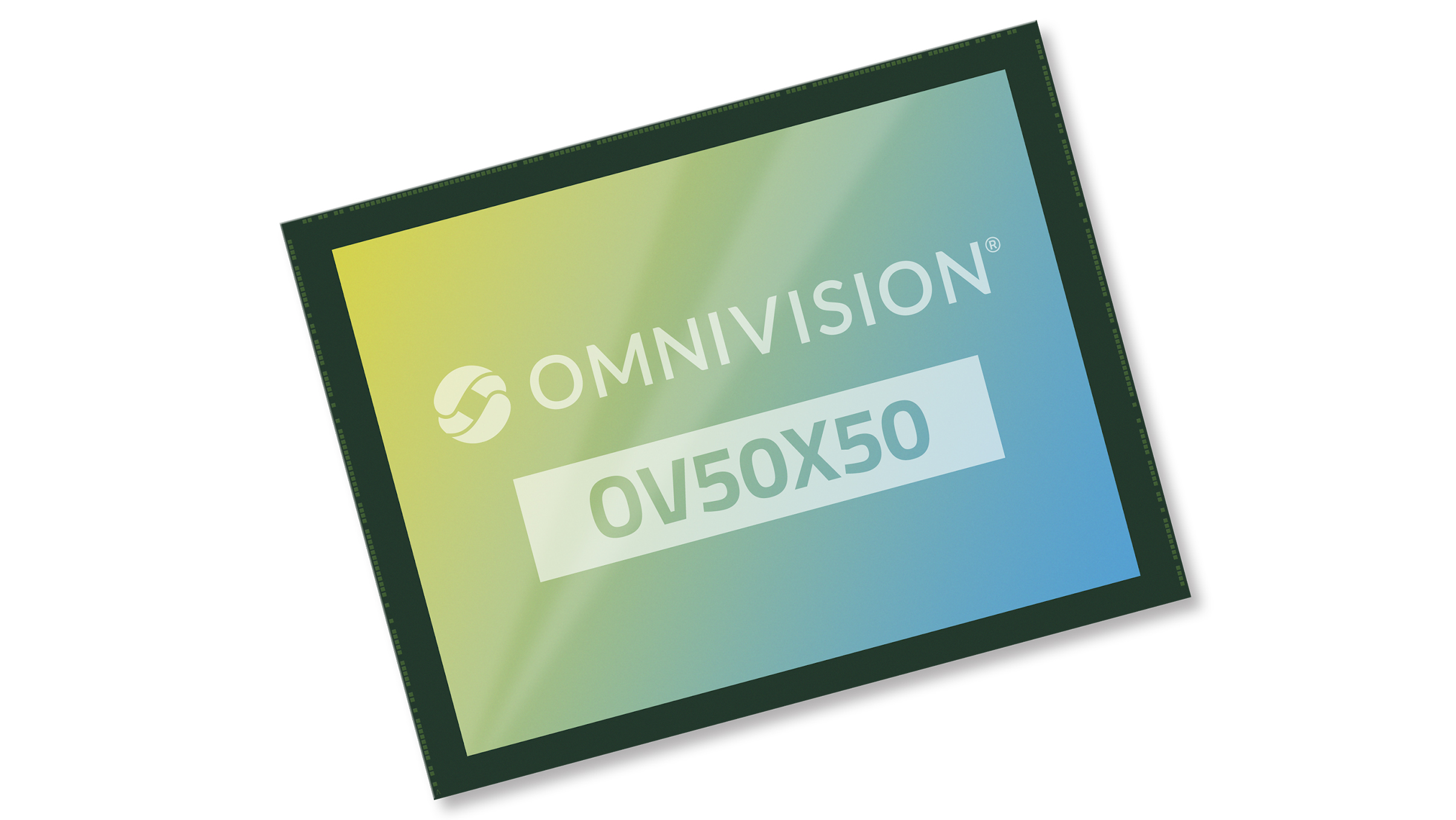Digital Camera World Verdict
The Sennheiser MKE 200 is an instant upgrade microphone that will level up your camera or smartphone audio recording. For novices looking to match it with their mobile, Sennheiser doesn’t offer the suite of solutions Shure does with the pricier MV88+ — a mount, mini tripod, and an app to manage audio recording. What saves the MKE 200, therefore, other than its value is that it also doubles up as a DSLR or mirrorless camera microphone, and works a treat at improving audio capture at a relatively low cost.
Pros
- +
Instantly upgrades audio capture quality
- +
Battery-free solution
- +
Smartphone and camera support
Cons
- -
Confusing front to back design
- -
No on-body gain control
- -
No smartphone app
Why you can trust Digital Camera World
Sennheiser’s powering up your mobile audio capture with its MKE 200, a welcome addition to the handful of reputable smartphone mics on the scene, which include the Shure MV88+. Smartphone video quality is getting better and better, thanks to larger sensors, more compact periscope zooms, and smarter image stabilization. But when you’re watching back crispy 4K video, crackles, muffles, and wind noise are the last things you need to kill the vibe.
With tiny pinhole microphones dotted around the bodies of all phones, it’s little wonder the result in a compromise on audio quality. That’s why Sennheiser has come to the rescue with the MKE 200 smartphone-focused microphone. A multi-function shotgun-like mic, which also doubles up to help digital video cameras with line-in ports too, the portable solution could be exactly what your mobile movies need to ditch the snap, crackle, and pop in favor of sweet directional sound capture.
What’s in the box?
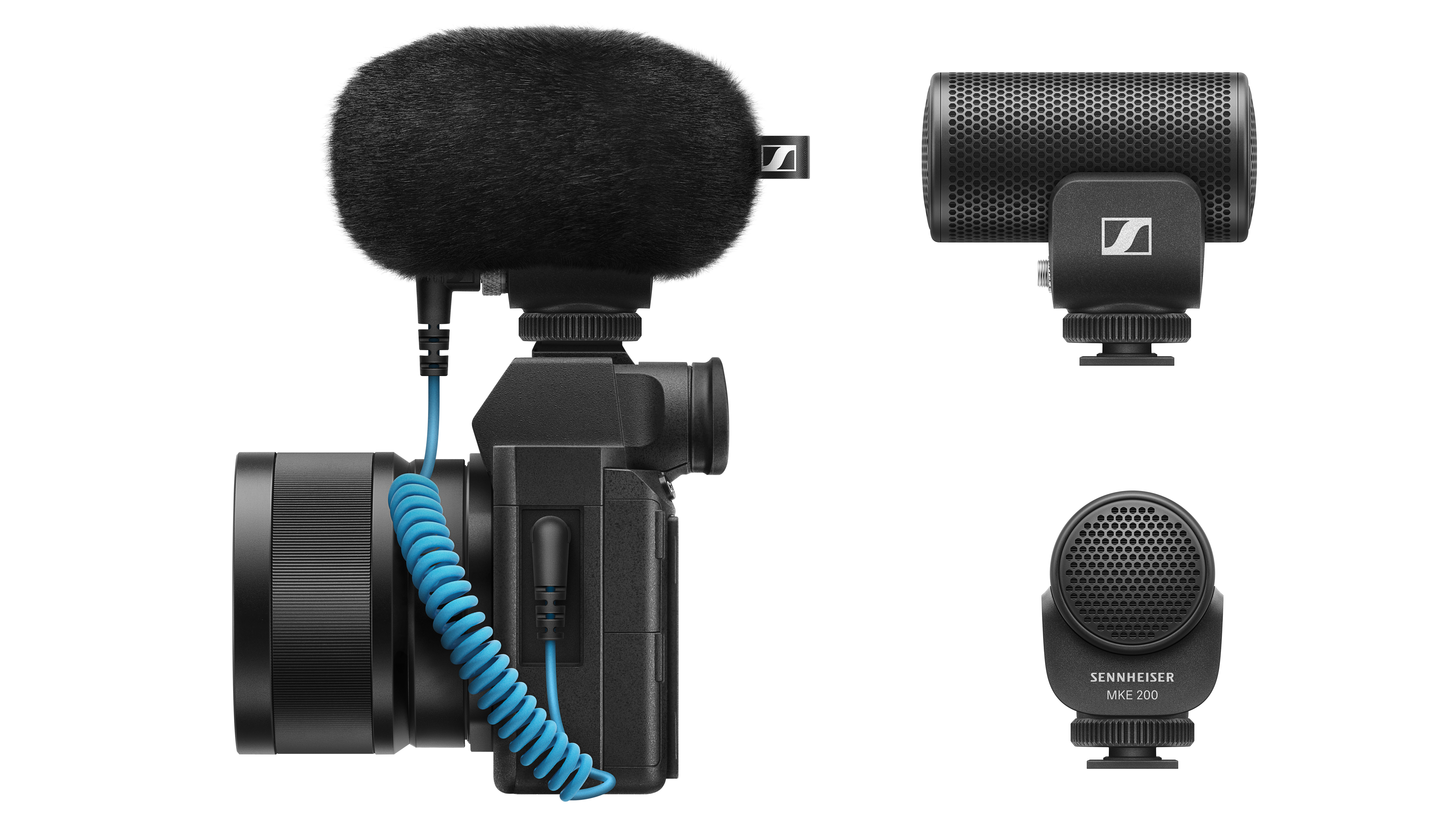
Open up the MKE 200 box and there are five pieces of note for you to play with: the microphone itself, a furry windshield, two 3.5mm coiled cables, one for DSLRs and field recorders, the other for smartphones, and a pouch to put everything in.
The key point here is that there are two almost identical-looking cables save for a paper flap that says ‘Smartphone’. The TRS to TRS cable won’t work for smartphones, just for traditional camera/audio mic-in jacks, while the TRRS cable will exclusively work for smartphones. We wish they were different colors.
With both being 3.5mm jack options, and most smartphones shipping without headphone jacks these days, you’ll definitely need to figure out what works best with your hardware. From the offset, for dedicated smartphone shooters, a USB-C mic like the Shure MV88+ makes more sense. That said, for hybrid smartphone DSLR shooters who just want one mic, the Sennheiser MKE 200 is the obvious option, given its 3.5mm connectivity.
Design
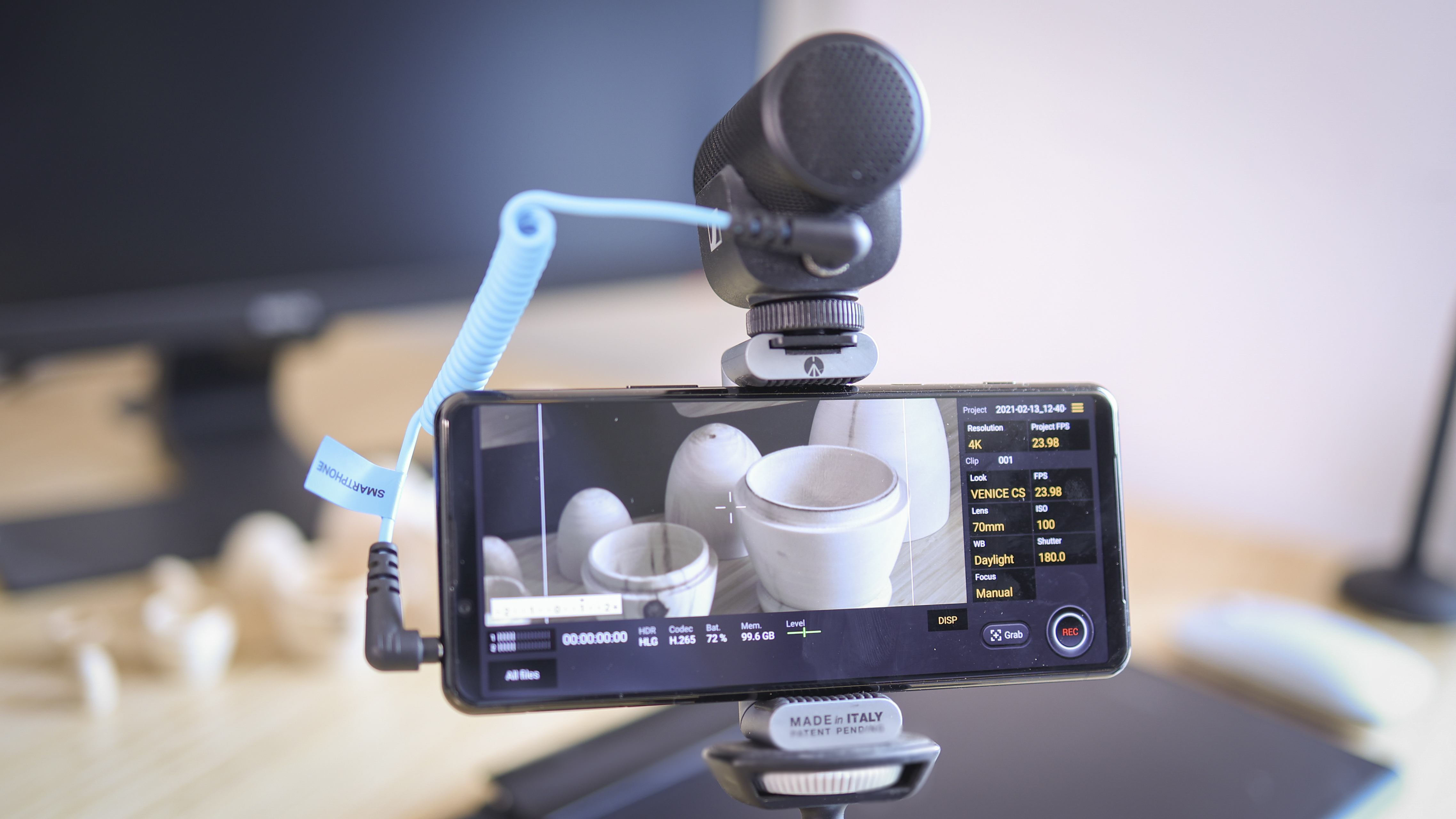
Compact, the Sennheiser MKE 200 weighs just 48g, and measures 69 x 60 x 39mm. No batteries required, it’s a plug and record solution, and it’s totally fuss-free. There aren’t any gain control settings on the mic, it’s available in black and black alone, and the one visual flourish comes in the form of its blue coiled cables.
The Sennheiser MKE 200 attaches to a cold shoe adapter, which makes it ideal for DSLRs and mirrorless cameras. Smartphone users will want to pick it up with a phone mount sporting one, so factor that into the cost of your microphone setup. Alternatively, you can thread the mic onto a tripod, so if you have a dual tripod mount, you could also be sorted.
The microphone itself is fixed within a cage, complete with an integrated shock mount to reduce handling noise. Featuring a super-cardioid capsule, it’s a very directional microphone, and weirdly, the cable connector should be on the front, so that’ll take some getting used to.
Speaking of the front of the mic, the 3.5mm connector is securely attached with a screw (locking jack), while on the other end of the coiled blue cable, you can connect the MKE 200 to your smartphone or camera. It does work with 3.5mm to USB-C adapters supplied with the phones we tested it on, but we had some mix and match fails with third-party adapters. In turn, we spent most of our time with the MKE 200 hooked up to a Sony Xperia 5 II, a phone with a 3.5mm headphone jack to be sure it would work.
Sound quality
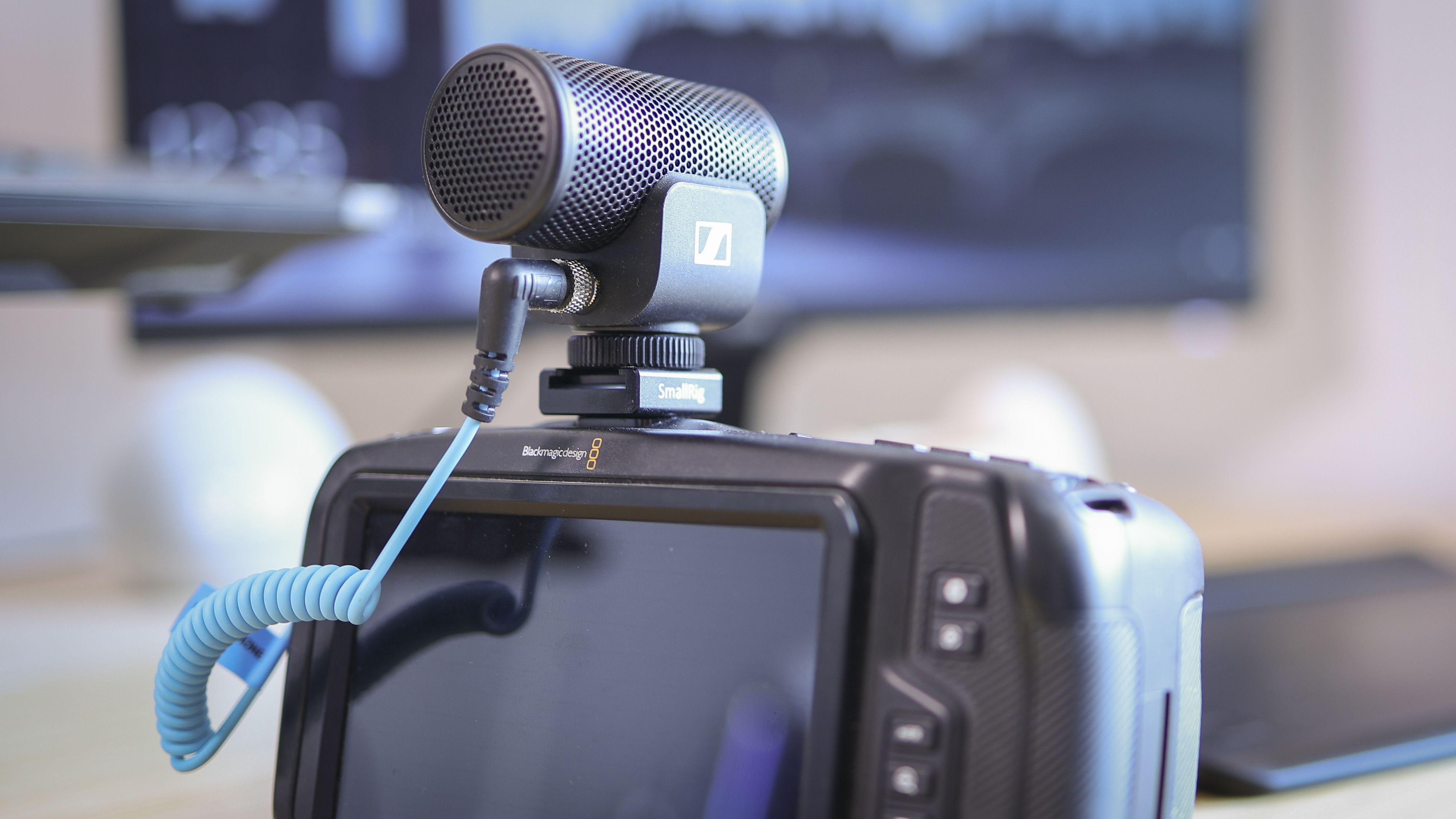
There’s really one main thing for the MKE 200 to do if you’re buying it for your smartphone, and that’s to boost its sound recording quality. We can unequivocally confirm that it 100 percent does just that. Whether you’re upgrading from a Galaxy S21 Ultra or an iPhone 12 Pro Max, across all smartphones we tested it with, the MKE 200’s audio capture was less pitchy, more directional, and deeper, with a more rounded feel to it. For anyone who needs a convenient mobile podcasting solution or a higher quality dictaphone on the fly, the MKE 200 checks a lot of boxes.
The audio quality is about on-par with the Shure MV88+. There’s clear compression going on, as well as a lack of sound information at lower registers, which makes the mic better-suited for spoken-word than, for example, live music events.
Whether or not the MKE200 will level up your camera’s audio will depend entirely on what camera you have. It’s definitely more sensitive and able to pick up significantly more environmental information than a camera like the Canon R6 and its onboard microphones. Meanwhile, the Blackmagic Pocket Cinema Camera 4K is a strong performer when it comes to recording sound in louder environments and grabs decent depth, however, for spoken word the Sennheiser would still be our choice.
It’s this versatility that makes the MKE 200 a really strong option. Even if it isn’t necessarily the best shotgun microphone around, or the best at the price, it’s one of the most versatile, and gives you value for money on a number of fronts, whether you’re shooting you a phone or camera.
Sennheiser MKE 200 verdict
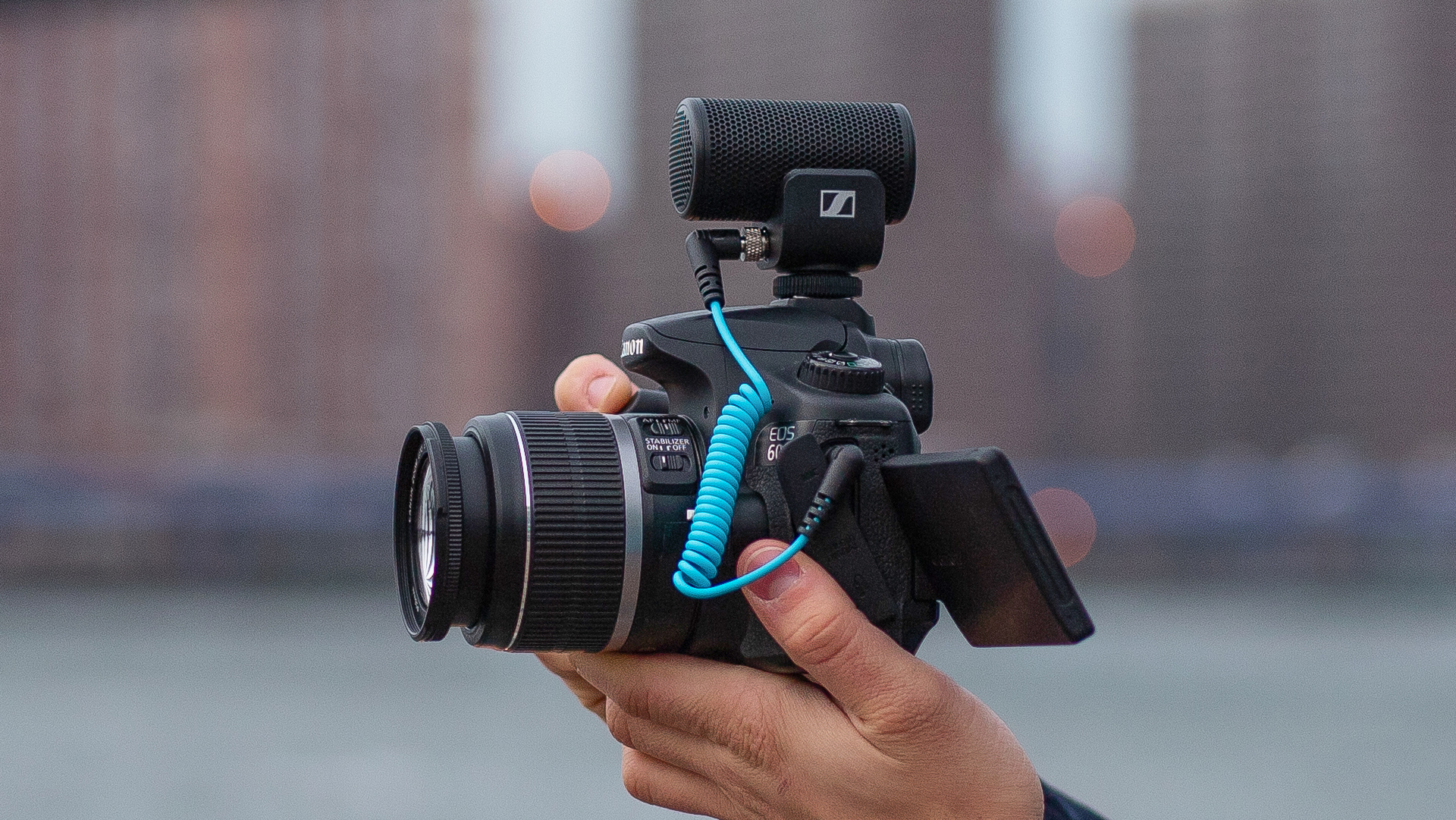
The MKE 200 isn’t perfect, but it’s very good. On the one hand, it’s a dream plug-and-go solution, and a solid run and gun microphone that will work with whatever equipment you’ve got. It isn’t super cheap, but neither is it expensive and so, it’s a great step to take if you’re intent on improving your audio.
Drill a bit deeper and there are things Sennheiser could have done to improve the experience. The cables could have been a different color or shade, and in turn easier to differentiate (we didn’t love the paper sticker solution Sennheiser went with). If you switch up between mobile and DSLR regularly, it’s very confusing. There could have also been an app, or a recommended app suite to use for smartphones. We used the microphone with Filmic Pro for video, and the Shure Motiv app for audio, but novices could probably do with some pointers. Better yet, Sennheiser could create an app like Motiv which is tailored to capturing audio with the MKE 200.
Despite a few items on our wishlist though, the MKE 200 is still easy to recommend for hybrid smartphone and DSLR shooters, and does exactly what you’d expect it to, without much in the way of fuss.
Read more:
The best microphones for vlogging and filmmakers
Best headphones for video editing
Basil Kronfli is a freelance technology journalist, consultant, and content creator. He trained in graphic design and started his career at Canon Europe before moving into journalism. Basil is also experienced in video production, independently running the YouTube channel TechEdit, and during his time at Future, he worked alongside the Digital Camera World team as a senior video producer.
